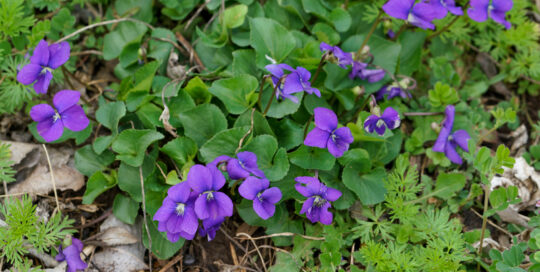Cowpen daisies, a fall butterfly and bee favorite
Views: 4173
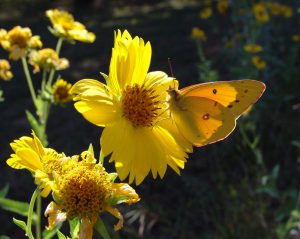
You won’t find them for sale at garden stores or nurseries, but cowpen daisies, Verbesina encelioides, also known as golden crownbeard, are a favorite flower for fall butterflies and bees. In my yard, asters and cowpen daisies steal the show when summer starts to wind down, and migrating monarchs never fail to find my patches of gold.
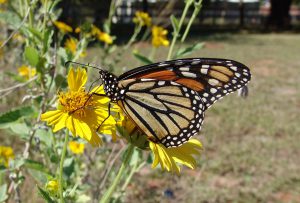
Migrating monarchs always seem to find my Cowpen Daisies.
Cowpen Daisies
Cowpen daisies have brilliant yellow flowers and gray-green foliage. They can get quite tall in good soil, up to five feet, but more commonly they are two to three feet high.
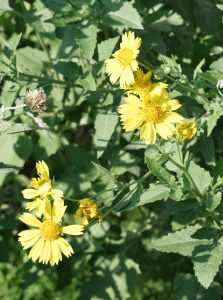
Cowpen Daisies.
Native to much of North America, these annuals thrive in disturbed soil. They reseed so freely that they may be considered invasive in areas outside their native range, and some people consider them weeds even in areas where they occur naturally. They are quite drought tolerant, although they’ll droop if not watered. I typically don’t water them much even in dry spells, and they perk up as soon as the rain returns. I suppose it might be possible to kill them through neglect, but I haven’t managed it yet.
Growing Cowpen Daisies
In my yard, I let them go to seed, and I don’t worry about having more in the same area next year. They will come back, probably in greater numbers. One thing I love about them: They will flower even in dry, dappled shade. This is one plant I’ll try to grow in any awful, bare spot in my yard. When I moved last winter, I collected seed to plant at my new house, but I didn’t need to bother. I had them come up as volunteers in pots I brought with me, and I transferred those plants to the areas I want them at my new place.
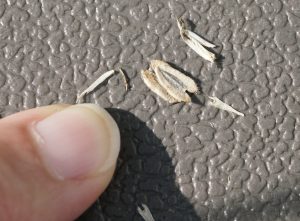
Birds will eat many of the seeds over winter.
Cowpen daisies are good for wildlife in many ways. They are an important source of pollen for many native insects, including a large number of bees, and they are a host plant for bordered patch and silvery checkerspot butterflies. The gold moth, Basilodes pepita, also uses it as a host plant. The seeds get eaten by birds, a favorite of doves and goldfinches in my yard.
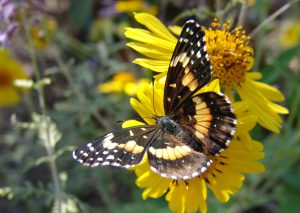
Bordered patch butterfly on cowpen daisy, one of its host plants.
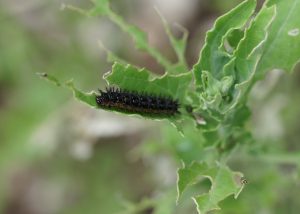
Silvery checkerspot caterpillar on cowpen daisy.
Cowpen daisies are toxic to goats and sheep, although these animals won’t readily eat them. Deer won’t bother them.
If you have a butterfly garden, I’d encourage you to plant cowpen daisies. You can purchase seeds from a variety of native seed resources. They may get eaten by caterpillars, but bordered patches and silvery checkerspots are both beautiful butterflies. Migrating monarchs will find them on their journey south, and then birds will feed on the seeds all winter. Be prepared to pull out undesired extras in spring, then enjoy this plant for the rest of the year.
Meet Leslie Miller
Leslie Ann Miller shares 3.5 acres in rural Oklahoma with birds, butterflies and wide variety of animals. She is currently transforming her yard with plantings…
Leslie's Recent Posts

Early spring is time to plant native spring ephemerals
